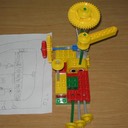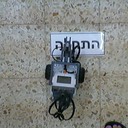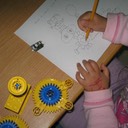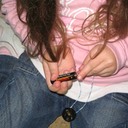An R&D project focusing on design and techological thinking in the kindergarten. A curricular model, based on the research conducted over the years, has evolved and is being implemented in kindergartens for about a decade. The rationale of the model is based on the encounter between Technology (as subject) and Learning, both taken in their broadest possible sense. The main idea in it is is that the mindful interaction with the designed world (the human-mind-made-world), and active involvement in designing objects for this world (material and symbolic), serve as an intellectual and practical platform for promoting young children's learning about contents, processes, and skills concerning the technologicl world around us, and about the very nature of human thinking and learning.
Learning processes are organized in seven main strands (Sn), running throughout the year along a developmentally-appropriate progression: S1 - the designed/artificial world (products and their use/context); S2 - problem solving (from haphazard to budding systematicity in planning and implementing solutions), S3 - design (from free-form building to designed/reflective construction); S4 - notations (from conventional signs to computer programs); S5 - smart artifacts (from analyzing their functioning and behaviors to the design of simple robots’ adaptive behaviors); S6 - special design for special needs (learning opportunities for children with special needs); S7 - the whole-kindergarten project.



